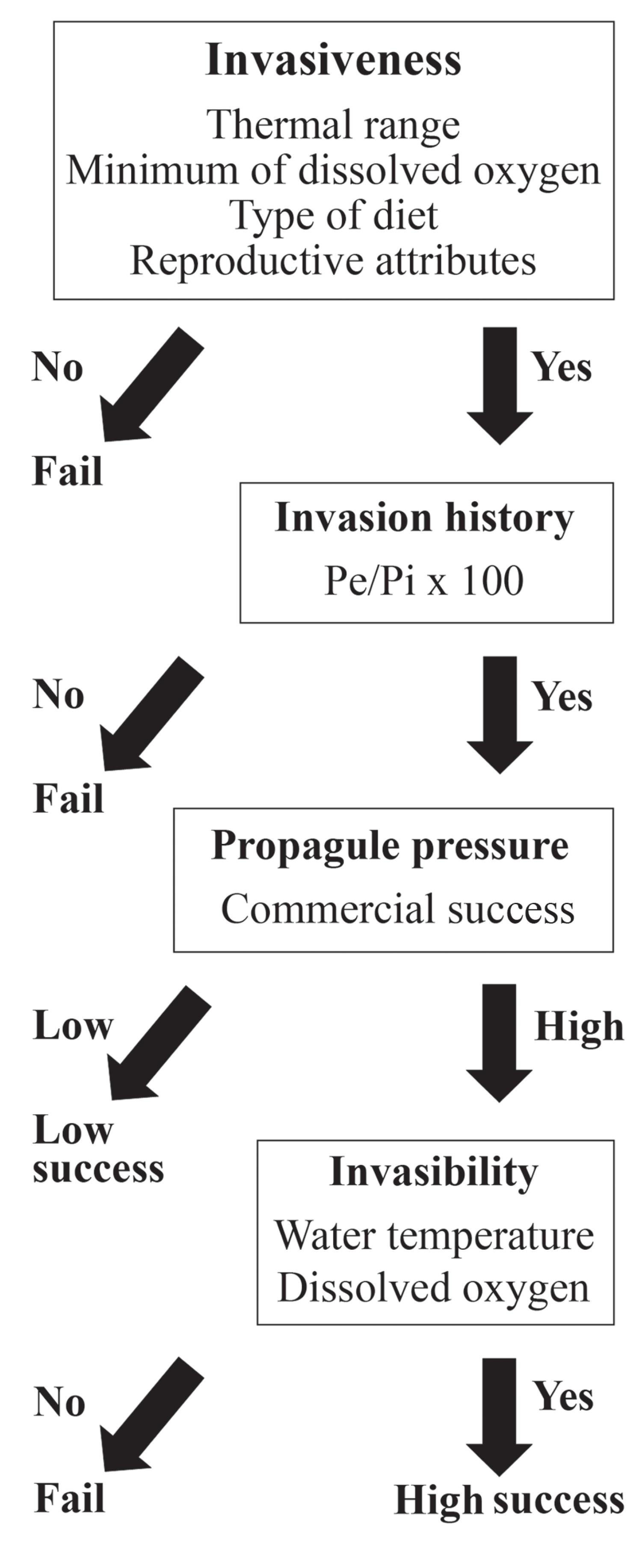A model was developed to assess the risk of invasion of ornamental non-native fishes to six rivers in the state of Minas Gerais, southeastern Brazil, with focus on species popularity. Thirty-nine aquarium shops, in six cities, were visited monthly from January to December 2007. In each city, fish species were identified, and their biology and invasion history information was obtained from the literature. We calculated the annual frequency of occurrence and average number of specimens monthly available in stores. Quarterly water temperature and dissolved oxygen data from 1997 to 2007 were obtained for the Velhas, Muriaé, Uberabinha, Sapucaí-Mirim, Doce and Todos os Santos Rivers from public databases. The invasion risk of each species was assessed through a model comprising nine parameters grouped in four variables: (i) Invasiveness (thermal and dissolved oxygen ranges, diet, parental care or fecundity), (ii) History of invasions (establishment), (iii) Propagule pressure (commercial success, comprising annual frequency of occurrence and number of specimens available monthly at stores), and (iv) Invasibility (water temperature and dissolved oxygen in the target river compatible with the species ranges). Of the 345 ornamental fish species for sale, 332 are non-native to either Minas Gerais (n = 151) or Brazil (n = 194). Based on the proposed cutting values, in particular the compatibility between species and recipient thermal ranges, five ornamental non-native species (Cyprinus rubrofuscus, Carassius auratus, Xiphophorus hellerii, Poecilia reticulata, and P. latipinna) can potentially invade the Velhas and Muriaé Rivers, four species (Cyprinus rubrofuscus, Carassius auratus, X. helleri, and P. reticulata) the Uberabinha River, four species (Cyprinus rubrofuscus, Carassius auratus, X. maculatus, and P. reticulata) the Sapucaí-Mirim River, three species (Carassius auratus, X. hellerii, and P. reticulata) the Doce River, and three species (Cyprinus rubrofuscus, P. reticulata, and Amatitlania nigrofasciata) can potentially invade the Todos os Santos River. Six recommendations are suggested to reduce the invasion risk of non-native fish on the rivers surveyed posed by aquarium trade.
Aquarium shops; Aquarium dumping; Fishkeeping; Invasion risk assessment; Non-native fishes


